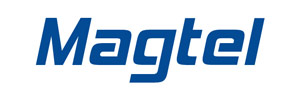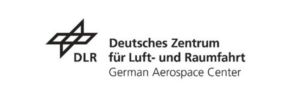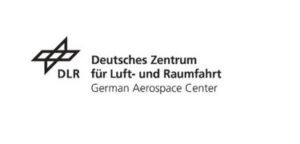
the concept
SOLARSCO2OL is a EU H2020 funded project aiming at developing an innovative, economically viable and easily replicable supercritical CO2 sCO2) power block for demonstrating the use of sCO2 cycles as a potential key technology to increase the flexibility of concentrated solar power (CSP) plants. This will reduce their Levelised Cost of Electricity (LCOE) to values below 10 c€/kWh in Europe and promote an innovative power plant cycle layout not requiring water.
The innovative SOLARSCO2OL plant layout, coupled with fast-reactive electric heaters and efficient heat exchangers (HEXs), will enable the operation and design of novel integrated CSP plant layouts.
Why sCO2 for EU CSP sector?
According to the JRC CSP platform, with an increased efficiency of component and price reduction, it could be feasible that 11 % of EU electricity will be produced by solar thermal electricity by 2050. In the EC energy strategy, CSP is mentioned as a potential dispatchable RES with increasing potential market/need when coupled with flexible, high performant and low CAPEX power conversion units. In this respect, sCO2 has been studied for several years as a future technology to overcome steam-based cycle in efficiency and power density – and thus as enabling technology to promote CSP widespread all over the world. SOLARSCO2OL presents sCO2 cycles as a key enabling technology to facilitate a larger deployment of CSP in the EU panorama, which is today composed (also considering available surfaces and DNI) by medium temperature application (most of them Parabolic trough – Tmax = 550°C) and small to medium size plants (all of them of 50 MW or less) enhancing their performance (efficiency, flexibility, annual yield) and reducing their LCOE.
Considering that compared to organic and superheated steam- based Rankine cycles, sCO2 cycles achieve high efficiencies over a wide temperature range (thus giving the opportunity to couple sCO2 power blocks with molten salt CSP plants, existing and newly built), with lower CAPEX, lower OPEX, no use of water as operating fluid (a plus for CSP plants in arid locations), smaller system footprint, and higher operational flexibility, SOLARSCO2OL aims to demonstrate the first MW Scale EU sCO2 power block operating in a real CSP plant.
SOLARSCO2OL will strengthen EU Leadership in CSP industry also capitalizing previous EU expertise (SCARABEUS, sCO2-flex, MUSTEC), bridging the gap with US, China, Japan R&D on these topics and studying different power plant layouts also to enhance CSP plants flexibility to enable providing grid flexibility services. SOLARSCO2OL is indeed not a just a H2020 demonstration project but the first sCO2 MW scale demo installed and tested in a real CSP plant environment worldwide (TRL8). This will be an achievement that will bridge sCO2 R&D gap with extra-EU countries bringing EU ahead of US – STEP project which is higher in scale (10 MW) but limited to experimental rig.
key objectives
Flexibility & Efficiency
Increase the operational flexibility and efficiency of existing and future CSP plants by using sCO2 power cycles able to be operated at temperature levels achievable by state-of-the-art concentrators, thereby also eliminating the use of water in the power cycle.
Cost-Competitiveness
Use novel sCO2 plant designs for generating solar thermal electricity in a more cost-competitive way
Sustainability
Help unlock the potential of CSP in Europe and worldwide to reach decarbonisation targets.
Project WP Structure
Objective:
WP1 has two main objectives:
- To develop flexible simulation tools for assessing the techno- economic viability of the novel CSP layouts with sCO2 under different market and cost boundary conditions, also including hybridization with PV, and for both small (< 10 MW) and large-scale systems (10-100 MW). The tools shall be used in subsequent replication tasks in WP7, and will be a KER of the project;
- To carry pre-engineering work and de-risking analysis for optimization and ultimately definition of the pilot demonstration layout and integration strategies for key components and infrastructure (i.e. tie-in points and civil works), for later detailed engineering and installation to be realized at in WP5.
WP1 is strictly linked to WP2, WP3, WP4, WP5, providing input to design and definition of turbomachinery and plant components as well as management strategy. WP1 is also fundamental for WP7, since models are developed and verified in WP1 prior to their use in replication studies.
Objectives:
This WP seeks to numerically and experimentally (mechanical running test) study the design of sCO2 compressor both for SOLARSCO2OL demonstration and potential upscale.
Capitalizing WP1 and in strict interaction with WP3 and WP4, WP2 aims to realize compressor prototype able to interact with sCO2 turbine.
Objectives:
WP3 (parallel to WP2) seeks to numerically and experimentally study the design of sCO2 turbine both for SOLARSCO2OL demonstration and potential upscale.
Capitalizing WP1 and in strict interaction with WP2 and WP4, WP3 aims to realize the turbine prototype able to properly interact with the sCO2 power block.
Objectives:
This work package seeks to numerically and experimentally study the design of crucial components of the SOLARSCO2OL demo site in La Africana: all heat exchangers and the high temperature fast reactive electric heater to be integrated at molten salts level. Such components will be studied both for SOLARSCO2OL demonstration and for potential upscale/replication in other type of contents as their technology/innovation could be capitalized also in “non-solar”/ “non-power” contexts. Capitalizing WP1 and interacting with WP2/3, WP4 aims to realize HEXs/electric heater able to properly interact with sCO2 power block and demo site constraints.
Objectives:
The goal of WP5 is to define and develop the control logics and the control algorithm to manage sCO2 cycle and machinery and its interaction with La Africana Plant (for what it concerns demonstration campaign) as well as to develop solarized sCO2 power plant management solutions in the different layout identified in WP1.
These serve as basis for the development and implementation of a novel generic SCADA-like control (by MAS) and monitoring system. This challenge will be a step-up in the state of the art of such software/hardware and can be on its own an exploitable product of the project. Efficiency and accuracy of transient of the power block is mandatory also in accordance with the solar input. Hence, a coordination and agreement regarding numbers and types of sensors, measurement positions and scanning frequencies need to be accomplished between the partners by interacting with other WPs.
An industrial data capturing system will be used for pressure, mass flow and temperature measurement. Sensor procurement and installation will be executed by MAGTEL.
Objectives:
The objectives of WP6 are to:
- Test in a real operative plant the integration of the SOLARSCO2OL concept;
- Increase CSP power plant flexibility by the sCO2 power block and the molten salt electric heater;
- Determine the benefits in terms of enhanced turbomachinery efficiency, reduced LCOE and GHG emissions.
Objectives:
The objectives of WP7, leveraging the demonstration monitoring results from WP6, are:
- to upscale the SOLARSCO2OL concept up to 10MW scale for the EU market and up to over 10MW for the extra-EU market,
- to evaluate the potential of SOLARSCO2OL solutions in virtual demo sites,
- to scrutinize the regulatory and non-technological evidences to unlock the potential of SOLARSCO2OL concepts,
- to evaluate the impact of SOLARSCO2OL solutions from both economic and environmental point of view,
- to assess the societal readiness of the proposed solutions,
- to define the most suitable business models and inscribe market roadmap.
Objectives:
The main objective of WP8 is to define effective strategies for dissemination of the project activities and outcomes, as well as clear go-to-market strategies for products and services developed within the project. Main activities are:
- Establishing effective channels, platforms and means for:
- disseminating the project objectives, activity progress and outcomes to all relevant stakeholders to foster their engagement and commitment (if applicable);
- informing and engaging decision makers in SET-Plan countries;
- raising awareness and mobilizing wider audience and showing how the impacts are relevant;
- Organizing dissemination events and workshops.























